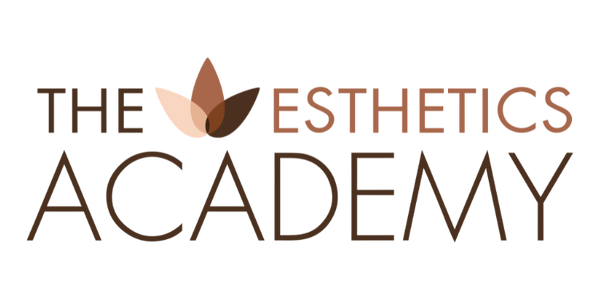Walk through a forest, step into a greenhouse, or crush a fresh herb between your fingers and you’re surrounded by chemistry. Plants are in constant conversation with their environment, sending signals, defending themselves, and adapting to stress using a vast network of natural compounds. It’s these compounds—flavonoids, terpenes, alkaloids, esters, and beyond—that have inspired generations of healers, herbalists, and now cosmetic scientists to explore what plants can do for the skin.
What makes plants so powerful isn’t just their origin in nature—it’s their ability to formulate themselves for survival. Their protective pigments, stress-response molecules, and antioxidant systems often mirror the needs of human skin: to repair, to calm, to restore balance. When we understand how to extract and formulate with these compounds, we tap into a legacy of wisdom that’s continually evolving through modern science.
From Ancient Rituals to Advanced Formulation
The use of plants in beauty and skin rituals goes back thousands of years. Some of the earliest known records of plant-powered cosmetics date to Ancient Egypt—where aloe vera, frankincense, moringa oil, and crushed botanicals were incorporated into balms, ointments, and perfumes. Cleopatra herself is said to have used saffron-infused face masks and rosewater tonics. Across time and continents, botanicals have remained a part of cosmetic culture—from Ayurveda’s use of turmeric and sandalwood to Indigenous North American healing salves made with sweetgrass and calendula.
What connects the past to the present is not just tradition—it’s results. But today’s skincare landscape offers tools our ancestors never had: advanced extraction processes, sophisticated delivery systems, and a deeper molecular understanding of how plant actives interact with the skin. We’re no longer guessing at benefit—we can now isolate, test, stabilize, and formulate with purpose and precision.
Extraction: Where It All Starts
Extraction is the process by which raw plant material is transformed into a usable ingredient. It determines which compounds are present, in what concentration, and how they will interact with the rest of a formula.
Each extraction method serves a specific purpose:
-
Aqueous methods isolate water-soluble compounds like polysaccharides and polyphenols.
-
Hydroalcoholic extractions pull a broader range of actives, including flavonoids and alkaloids.
-
Glycerites offer gentle, skin-compatible extracts suitable for sensitive formulas.
-
Cold pressing yields oils rich in essential fatty acids and fat-soluble vitamins.
-
Supercritical CO₂ extraction delivers highly pure, solvent-free actives with minimal degradation.
-
Enzymatic and fermentation-assisted methods enhance bioavailability and create novel skin-supportive compounds.
The choice of extraction is never arbitrary. It is informed by the chemistry of the plant, the function of the targeted compound, and the formulation context. A cosmetic chemist selects based on how an extract will behave—its solubility, pH sensitivity, oxidation risk, and intended impact on the skin.
Botanical Extracts as Functional Actives
When used purposefully, plant extracts contribute more than botanical appeal. They deliver measurable effects that influence skin outcomes and product performance. They can act as antioxidants, brighteners, barrier-support agents, or calming agents. But their role often goes further.
Botanical extracts may support formulation stability, buffer sensitizing actives, or improve ingredient synergy. In well-designed products, they enhance both the therapeutic effect and the sensory experience. Their presence is integrated, not decorative.
Can You Tell How an Extract Was Made?
In most cases, no. Ingredient labels don’t typically reveal how a botanical was extracted. A listing like “Plant X Extract” could refer to any number of processes—water infusion, alcohol extraction, cold pressing, CO₂ extraction, or even fermentation. Those distinctions are rarely specified, even in professional products.
While it’s not always critical to know the exact method, understanding it can offer valuable insight into how an ingredient functions within the formula. It helps clarify potency, stability, solubility, and overall behavior on the skin. That awareness often creates a positive ripple effect: sharper product analysis, stronger client education, and more confident treatment planning.
When possible, dig deeper. Review product literature, ask your suppliers or brand reps, and build relationships with labs that value transparency. The more you understand what you're working with, the more strategic and empowered your choices become.
The People Behind the Process
Extraction and formulation are collaborative sciences. They require a unique blend of technical knowledge, creativity, and discipline. Behind every high-performing botanical product is a chemist or formulator who understands not just plants, but systems—how actives behave, how they degrade, how they interact.
It truly is an art built on thousands of details: solvent choice, pH alignment, preservative strategy, emulsification, and more. These professionals translate nature’s chemistry into skincare that is stable, effective, and elegant to use.
For Estheticians and Brand Builders
If you’re a skincare professional, this knowledge isn’t just interesting—it’s empowering. It allows you to understand your products more deeply, communicate more clearly with clients, and select formulas that align with both your values and your standards.
If you’ve been considering creating a product line of your own, this is where it starts. You don’t need to master chemistry—but understanding extraction, formulation, and ingredient behavior will make you a stronger founder and collaborator.
We proudly support professionals at every stage of that journey through our partners at DermaSystems Cosmetics Lab, who bring expertise, guidance, and full-service formulation support to brands built by estheticians, educators, and beauty leaders.
Final Thoughts
Plant-based ingredients have always played a role in skincare, but how we use them today is more informed, more technical, and more precise than ever before. With modern extraction methods and thoughtful formulation, we’re able to access the full potential of botanical actives and apply them in ways that truly support skin health and performance.
For professionals, understanding how a plant makes its way into a product—through sourcing, extraction, and formulation—is an empowering perspective shift that deepens product knowledge, sharpens decision-making, and opens the door to more intentional practice.
Whether you’re formulating, treating, educating, or just exploring what’s next in your career, this kind of understanding becomes part of your foundation. And over time, it shapes the way you work—with more clarity, more confidence, and a deeper connection to the formulas in your hands.

